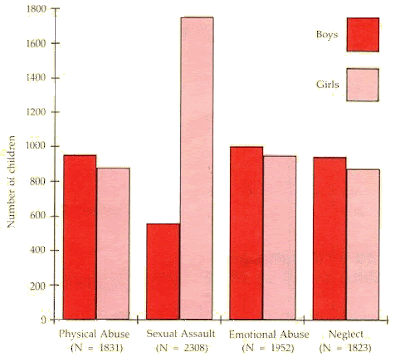Child Abuse and Neglect - Topic Overview
What is child abuse and neglect?
Child abuse and neglect includes any act that harms a child. Some people use the term "child maltreatment" to include both abuse and neglect.
Children who are maltreated may suffer in many ways. Young children are at special risk. They may not grow properly, or they may have learning problems. They may feel bad about themselves and not trust other people. They may be scared or angry. Sometimes they die.
Children are not able to understand that abuse or neglect is not their fault. They may think that they did something wrong and deserve what happened. It is up to adults who care to protect them. If you know about or suspect child abuse or neglect, there are ways you can help.
What are the types of abuse and neglect?
Child abuse means doing something that hurts a child. This may be physical, emotional, or sexual. Neglect means not giving or doing something that a child needs.
- Physical abuse is often the easiest type to notice. It includes hitting, kicking, shaking, pinching, and burning. It may leave bruises, cuts, or other marks and cause pain, broken bones, or internal injuries.
- Emotional abuse is saying or doing things that make a child feel unloved, unwanted, unsafe, or worthless. It can range from yelling and threatening to ignoring the child and not giving love and support. It may not leave scars you can see, but the damage to a child is just as real.
- Sexual abuse is any sexual contact between an adult and a child or between an older child and a younger child. Showing pornography to a child is a type of sexual abuse.
- Neglect happens when a child does not get the shelter, schooling, clothing, medical care, or protection he or she needs. Child neglect is just as serious as abuse and is even more common.
What should you do if you suspect that a child has been abused or neglected?
Call the police or local child protective services. You do not have to give your name. A hospital may be able to connect you to places in your area that can help. Many hospitals have special programs to deal with child abuse and neglect.
If a child is in immediate danger or has been badly hurt, don't wait. Call 911 or other emergency services right away.
If you are a child or teen who is being abused, don't keep the secret. Tell someone who can make a difference-a trusted family member, teacher, counselor, or doctor. You do not deserve to be abused.
The Childhelp National Child Abuse Hotline is open 24 hours a day, 7 days a week to offer information, advice, and support. Call 1-800-4-A-CHILD (1-800-422-4453).
What should you do if you are afraid someone might harm your child?
If you think your child is in immediate danger, call 911 and get your child to a safe place and stay there. This may be the home of a close friend or family member or a domestic violence shelter. To find help in your area, call a trusted health professional, a child abuse organization, or the police.
If you are worried about the way someone acts around your child, find a quiet time to talk with the person alone. Help the person learn about child development issues. If it is your partner, you could take a parenting class together. Plan what you will do next if your concerns become more serious. Then follow through with your plan.
How can you prevent child abuse and neglect?
To protect your child from abuse:
- Listen to your child. Let him or her know it is safe to talk about anything with you.
- Get to know your child’s friends and their families.
- Screen all caregivers, such as babysitters and daycare centers. Find out what they know about child health, child development, and child care. This may include getting permission for a police background check.
- Teach your child the proper names for the private parts of his or her body. Teach the difference between "good touch" and "bad touch."
- Ask a family member or friend to give you a break when you feel overwhelmed. Learn healthy ways to manage stress. Look online for sources of information and support, such as Parents Anonymous (www.parentsanonymous.org).
- Get help if you have ever been a victim of abuse. A good place to start is the Childhelp Hotline at 1-800-4-A-CHILD (1-800-422-4453). You can talk to a counselor for free without giving your name.
To help children in your area:
- Learn to recognize the signs of abuse and neglect. For example, a child may not grow as expected, may be dirty or unhealthy, or may seem fearful, anxious, or depressed.
- Know the names of your neighbors and their children. Offer to help a new parent. Child abuse becomes less likely if parents and caregivers feel supported.
- Be an advocate for children. Support groups that help parents at risk of abusing their children. Donate time, money, or goods to a local domestic violence shelter.
- If you see abuse or neglect happening, speak up. A child’s life may depend on it.














No comments:
Post a Comment